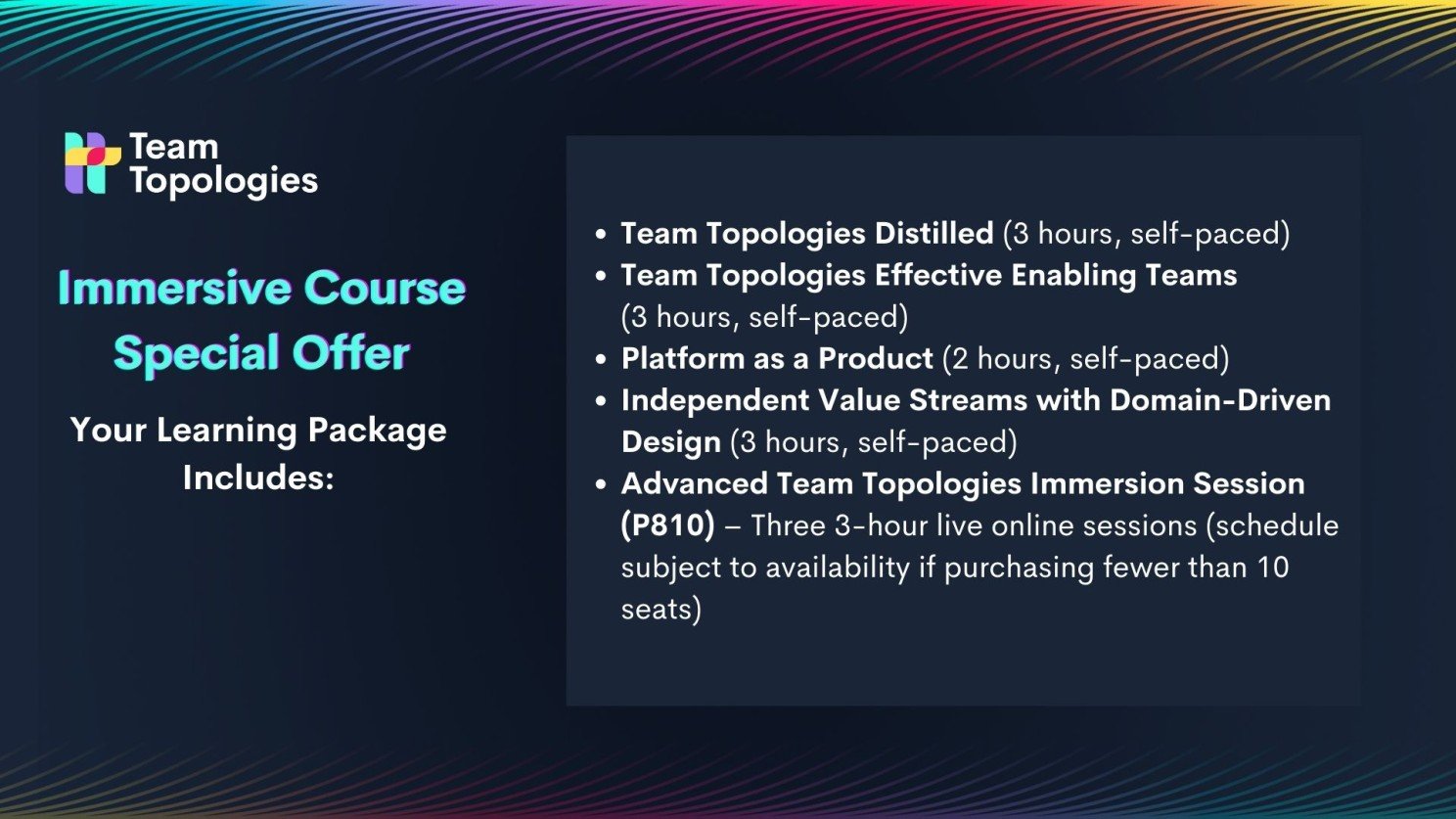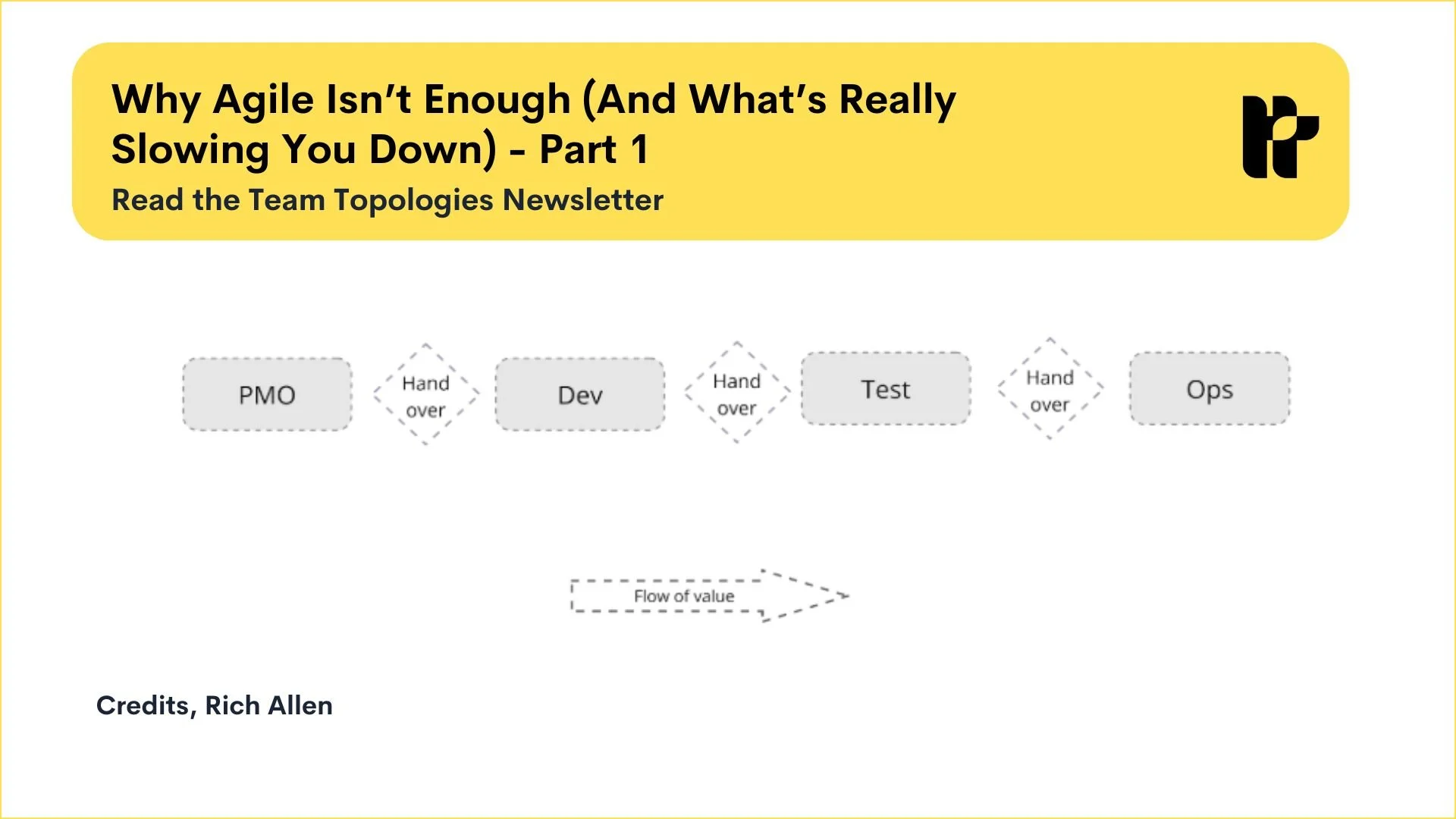Newsletter (DECEMBER 2024): Debunking Myths: Unleashing the True Power of Team Topologies for Fast Flow and Innovation
The current edition has been curated by Brian Graham
Over the years I have run into three recurring misconceptions related to Team Topologies which seem to persist in leadership teams and even in how large agile frameworks attempt to adopt Team Topologies. Fortunately we can very quickly dispel most of these most common myths.
Myth 1: Team Topologies is about assigning the four team types to existing teams
FALSE. Or rather, only 10% of the truth. The other 90% of Team Topologies makes magic happen. Organizations are commonly tied down in handovers, inter-team dependencies, confusion about who owns what, responsibilities that fall between the gaps, how two teams should interact, even awareness that they are interacting or should interact. Such a limited view of Team Topologies deactivates one of the most powerful tools in your leadership toolbox. It is essential to use Team Topologies to continuously guide thinking about how to improve flow. Every quarter, month, week, and day. We’re here because we need fast-flow of value, not because the team names themselves were the problem. PureGym is one good example of optimizing the way in which they respond to business needs by better defining their teams.
Myth 2: We don’t need teams if we hire really smart people
FALSE. Smarts will always help, but without a well-designed socio-technical environment—where team interactions, ownership, stability, and cognitive load align with the appropriate architecture— even the smartest individuals will struggle to provide value. Success lies in the synergy between the right people, the right architecture, and thoughtful team dynamics.
As Susanne Kaiser highlighted in her talks, a strong socio-technical foundation enables teams to thrive in complexity by fostering fast flow and adaptability. For example, Telenet, a Belgian telecom provider, successfully applied Team Topologies principles to combine empowered teams with an optimized architecture, driving business agility.
In today’s VUCA world, focusing on the interplay between people, architecture, and interactions is essential—far more impactful than the simplicity of “Just hire smart people.”
Myth 3: Platform teams are for all the tech stuff we can’t put a PM on
FALSE. A wonderful platform team is one that offers cognitive-load-reducing products as an opt-in service for the rest of your organization. Your team will know they use a platform when they can offload thinking about things that don’t matter to them by simply using something like an API or a package, but not when they create a dependency on a team to get some tricky bits of technology sorted out. Platforms should consume cognitive load, not missions or value streams. Reducing the cognitive load in a team gives teams more room to think about their missions. This turns platform teams into accelerators of innovation instead of a group of people we hand over special tickets to. For example, Trade Me adopted the Thinest Viable Platform (TVP) approach to streamline their development processes, allowing teams to focus on delivering value while minimizing unnecessary complexity and cognitive load. You will never be able to un-see the difference once you witness one. Treating teams as internal customers and getting them to openly embrace a platform fits squarely within the typical product management skillset. Teams who lack this platform-as-a-service mindset risk falling into a trap where they become a hard dependency on multiple teams and handover tickets from other teams to implement something for them. Platforms are accelerators, not task butlers.
Ready to streamline complexity and supercharge value delivery? Embrace Platform Engineering for smarter, faster outcomes.
What’s Coming Up Next?
We are gathering all Team Topologies events on our Events page and would love to hear your feedback about the ones you have attended or the ones that we have missed.
Live, March 27 Fast Flow Conf NL 2025 - Everything about Team Topologies
Exclusive Year-End Offer: 25% Off Dedicated Team Topologies Training – Limited Spaces Available!
Equip your team to thrive in 2025 with our proven program, tailored for implementation teams and organizations ready to adopt Team Topologies at scale. Led by three seasoned experts in Agile, DevOps, Platform Engineering, and Domain-Driven Design, this training provides practical guidance for driving transformative success.
Team Topologies Distilled - 3 hours, self paced.
Team Topologies Effective Enabling Teams - 3 hours, self paced.
Platform as a Product - 2 hours, self paced.
Independent Value Streams with Domain-Driven Design - 3 hours, self paced.
Team Topologies Advanced Immersion Session (P810) - 3x3-hours sessions, live online. (subject to available scheduled sessions if buying less than 10 seats)
Act fast—spaces are limited, and this special 25% discount is only available for trainings booked before the end of the year!
Join the Community
Over 500 active members are already engaging with practitioners, authors, and enthusiasts in the Team Topologies Community. Launched just over a month ago, the community is quickly becoming the go-to hub for sharing knowledge and seeking guidance on learning Team Topologies or applying its concepts to optimize business and teams for faster flow. Join one of the popular spaces, such as "For Fast Flow" or "For Leaders," to get your questions answered by Team Topologies experts or even the authors themselves. Let's collaborate to explore new use cases and build a valuable knowledge-sharing database that benefits everyone.
Let's welcome our new Team Topologies Advocate:
If you're passionate about Team Topologies and want to become an advocate, we would love to have you join us. Or, if you have a story to share, we would be honored to feature it on the website.
If you'd like to share your experiences or need assistance, please don't hesitate to get in touch.
Was this newsletter useful? Please share your thoughts on how we can make it better. Send us an email.












